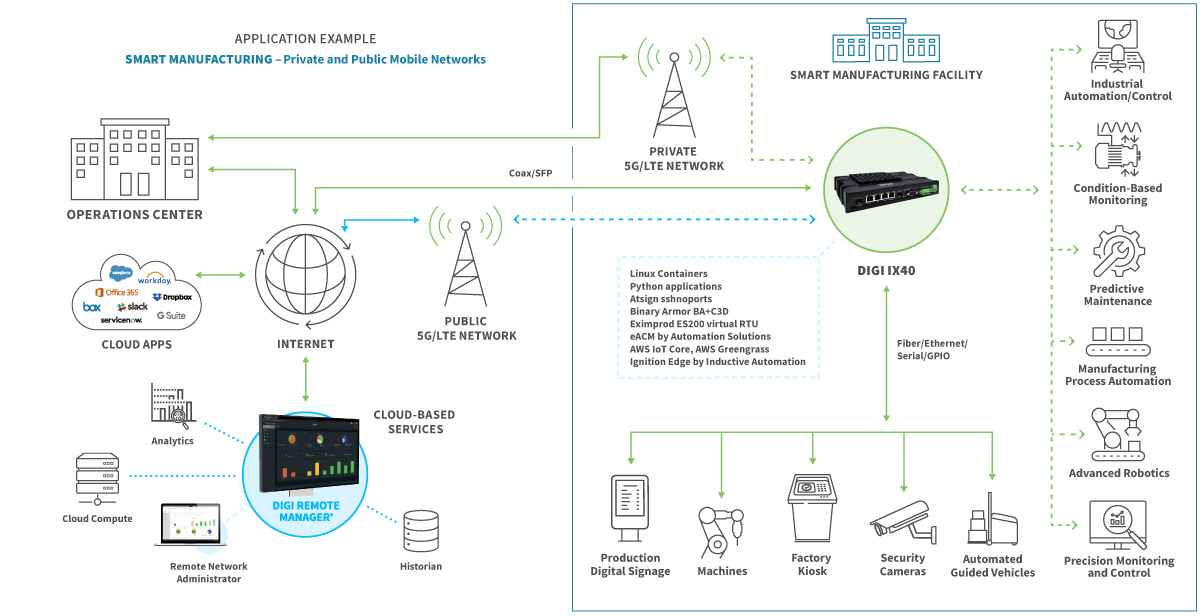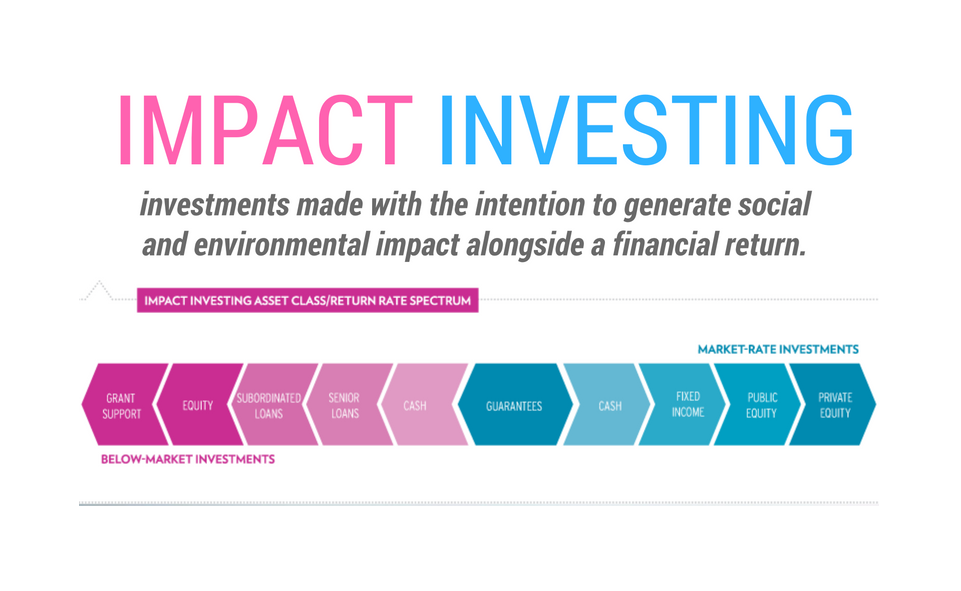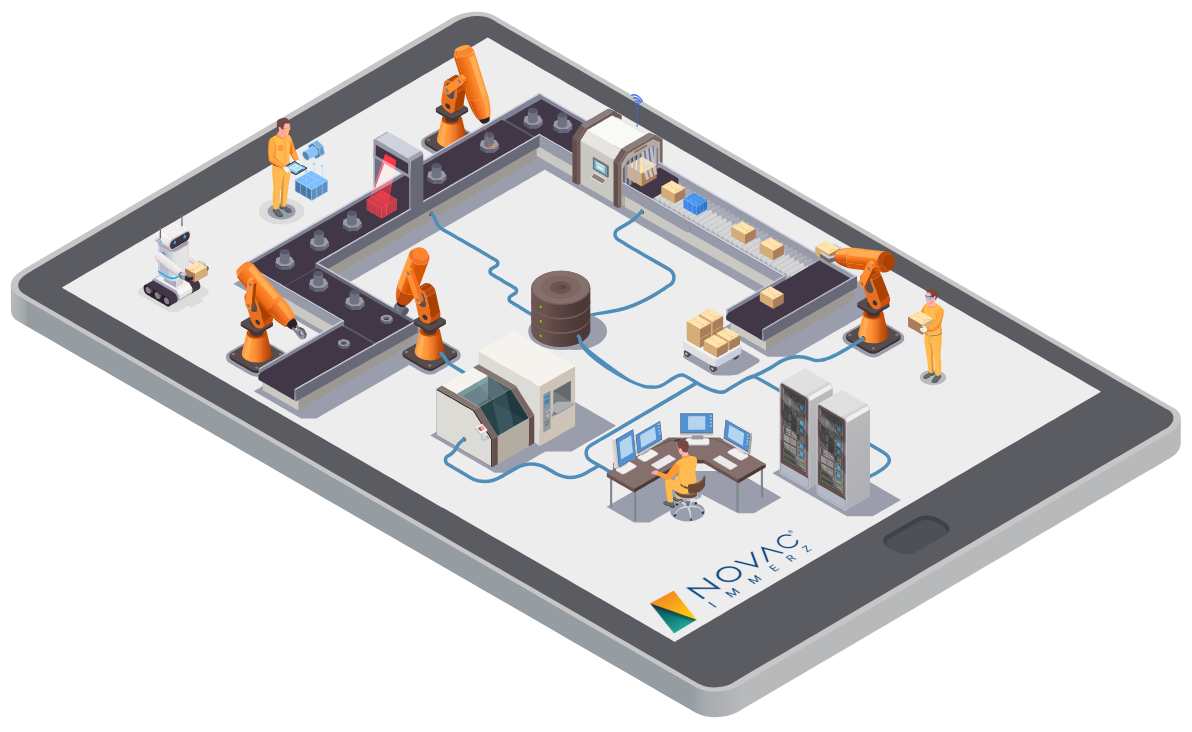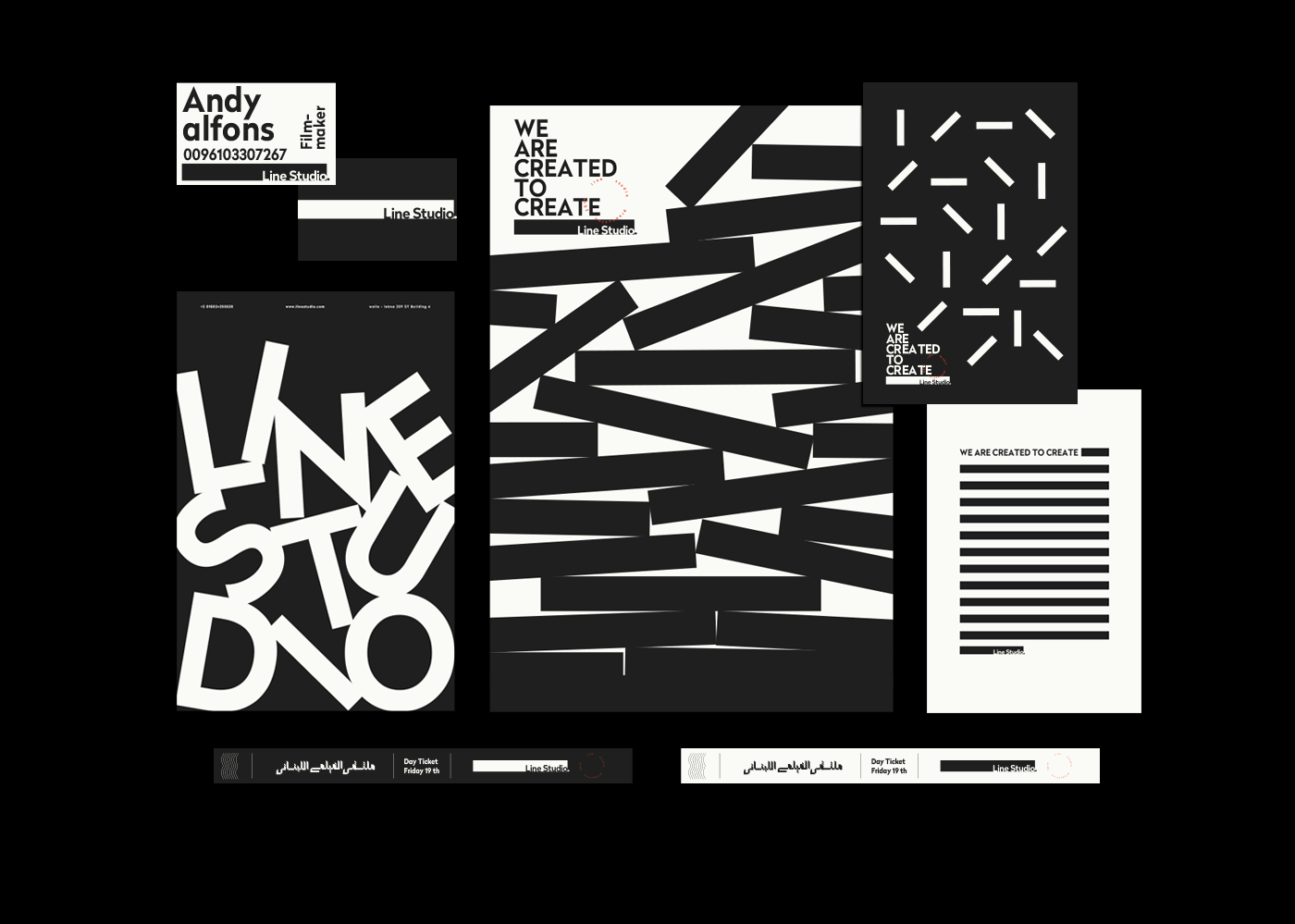Remote IT Support Budget-Friendly Options
Leveraging Free and Open-Source Tools
Before you even think about paid software, explore the wealth of free and open-source tools available. Many excellent options exist for remote desktop support, such as TeamViewer’s free version (with limitations), AnyDesk’s free tier, or even using built-in features within your operating system like Windows Remote Desktop. While these might have limitations on usage time or features compared to paid counterparts, they’re a fantastic way to get started and handle basic remote support tasks. Remember to weigh the limitations against your actual needs—if you only need to assist a few users occasionally, a free tool might be perfectly sufficient.
Utilizing Cloud-Based Solutions with Free Tiers
Several cloud-based remote support and management platforms offer generous free tiers or free trials. These often include features like remote access, screen sharing, file transfer, and basic chat functionality. Take advantage of these trials to test the platforms and assess their suitability for your needs before committing to a paid subscription. Carefully review the limitations of the free tiers—bandwidth restrictions, user limits, or feature restrictions—to ensure they align with your anticipated usage.
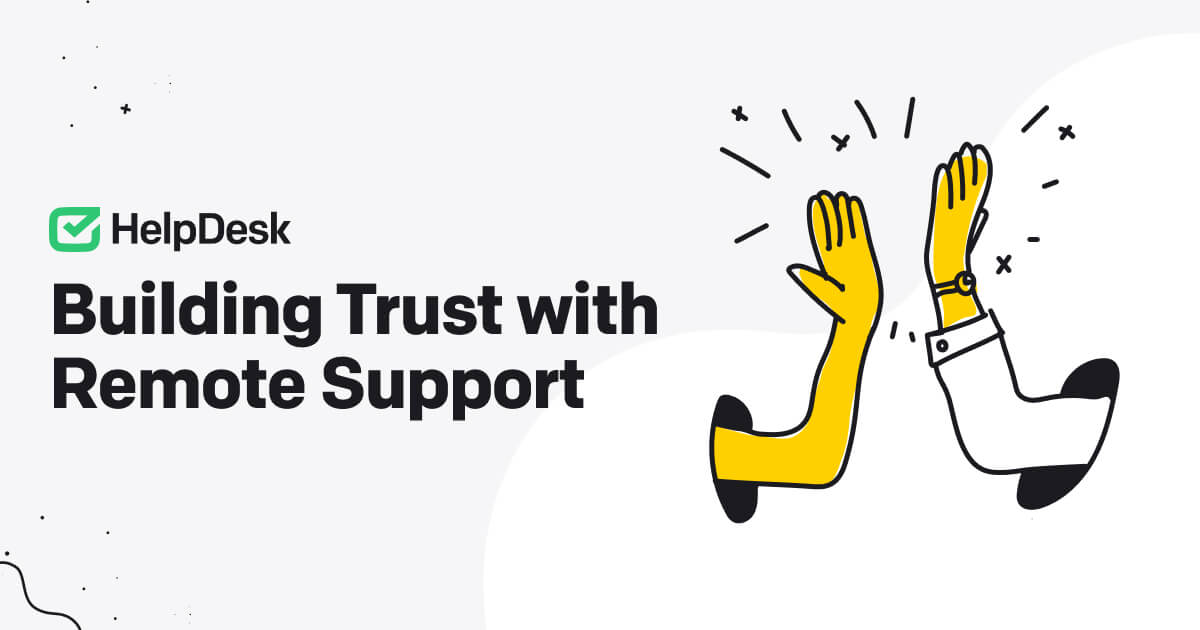
Exploring Affordable Managed Service Providers (MSPs)
While you might initially picture MSPs as expensive, many smaller, regional MSPs offer more budget-friendly packages than large national firms. These often cater to small businesses and individuals, providing cost-effective solutions tailored to their specific requirements. Shop around and compare quotes, looking beyond just the monthly fee to understand the level of support included. Factors like response times, the number of devices covered, and the types of issues they handle should all inform your decision.
DIY Remote Support with Screen Recording and Video Conferencing
For simple troubleshooting, combining free screen recording software (like OBS Studio) with a video conferencing tool (like Zoom or Google Meet) can be remarkably effective. This allows you to visually guide users through the steps, sharing your screen while simultaneously communicating verbally. This DIY approach works best for situations where the issue can be resolved through visual guidance, rather than requiring in-depth system manipulation. However, this approach lacks the professional level features available in purpose-built remote access tools.
Implementing Robust Security Measures to Minimize Costs
Investing in strong security practices is crucial, but it doesn’t have to be costly. Regular software updates, strong passwords, multi-factor authentication (MFA) where possible, and user education on cybersecurity best practices can significantly reduce the risk of costly security breaches. The cost of dealing with a security incident far outweighs the effort and (minimal) expense involved in these preventative measures. This proactive approach minimizes the need for expensive reactive measures later.
Negotiating Contracts and Bundling Services
Don’t be afraid to negotiate with providers, especially when committing to a longer-term contract. Many are willing to offer discounts or bundled services for loyal clients. If you need multiple services, such as remote support, cloud storage, and cybersecurity solutions, see if providers can offer a combined package at a reduced rate. Clearly outline your needs and budget upfront, and be prepared to explore different options to find the best value for your investment.
Training Your Team and Utilizing Internal Resources
Investing time in training your internal team can be a long-term cost-saver. Equipping your staff with the necessary skills to handle basic troubleshooting and remote support tasks can drastically reduce reliance on external assistance. This training can be done using online resources, internal documentation, or even through cross-training within the team. This empowers your employees and reduces the need for expensive external support for routine issues.
Prioritizing Proactive Maintenance to Prevent Issues
Proactive maintenance, such as regularly updating software, running system scans, and backing up data, significantly reduces the chances of needing costly emergency remote support. Implementing a routine maintenance schedule can save considerable time and money in the long run by preventing problems before they escalate. This approach is a preventative measure that significantly reduces the need for reactive emergency fixes which can be much more expensive.
Choosing the Right Level of Support Based on Needs
Carefully consider the level of remote support your business actually requires. If you only need occasional assistance with simple issues, a basic, cost-effective solution will suffice. However, if you have complex systems and require around-the-clock support, you may need to invest in a more comprehensive, and potentially pricier, solution. Honest self-assessment regarding your support requirements is critical to avoiding overspending on unnecessary features. For information on remote IT support pricing, please click here: [link to tankionlineaz.com](https://tankionlineaz.com)
Open Access Publishing How Much Does it Really Cost?
Understanding the Different Open Access Models
There’s no single answer to how much open access (OA) publishing costs. The price varies dramatically depending on the journal, the type of OA, and even the article itself. The two main OA models are “gold” and “green.” Gold OA means the article is published directly in an OA journal, meaning the author (or their institution) pays an Article Processing Charge (APC). Green OA, on the other hand, involves publishing in a subscription-based journal and then making a preprint or postprint version available in an open repository. The costs associated with these models are vastly different.
Article Processing Charges (APCs): The Gold Standard’s Price Tag
Gold OA’s biggest expense is the APC. These fees can range from a few hundred dollars to several thousand, sometimes even exceeding $5,000 for prestigious journals. Factors affecting the APC include the journal’s prestige (higher impact factor generally means higher APCs), the journal’s publishing house (some are known for higher fees than others), and the length and complexity of the article (longer, more heavily illustrated articles might cost more). It’s crucial to check the specific APC for each journal before submission, as they are usually listed clearly on the journal’s website.

Exploring the Variables That Influence APC Costs
Several factors influence the final cost. Some journals offer discounts for authors from low-income countries or for those affiliated with specific institutions. Some may also have waivers available based on financial need. However, securing such discounts or waivers often requires a formal application process and can involve additional paperwork. Furthermore, some journals may charge extra for services like color figures or supplementary materials, which can significantly add to the overall cost.
The Hidden Costs Beyond the APC
While the APC is the most significant cost for gold OA, other expenses can accumulate. For example, preparing figures and tables to meet journal standards can require professional assistance, adding to the overall budget. Similarly, professional editing services, while not strictly mandatory, can significantly improve the manuscript’s quality and increase its chances of acceptance, making this an often worthwhile investment. These additional costs, while variable, should be considered when planning an OA publication budget.
Green OA: A Lower-Cost Alternative?
Green OA presents a potentially more affordable alternative. Since the article is published in a subscription-based journal, there’s no APC. However, there might still be costs associated with preparing the manuscript for submission, potential professional editing, and ensuring that the self-archived version complies with the journal’s self-archiving policy. This often involves a delay before the manuscript can be made publicly available, following an embargo period.
Funding Opportunities and Institutional Support
Many institutions offer funding specifically for OA publishing, either through grants or direct support. Researchers should check with their universities or research organizations to see what kind of funding is available. Furthermore, various funding bodies, including research councils and foundations, may include open access mandates in their grant agreements, providing funding for APCs as part of the grant. This can greatly alleviate the financial burden on individual researchers.
Navigating the Financial Landscape of Open Access
The cost of open access publishing is a complex issue. While gold OA involves substantial upfront costs, green OA offers a potentially cheaper route, albeit often with constraints on accessibility timelines. Thorough research into journal fees, available funding options, and institutional support is crucial for making an informed decision. Researchers need to weigh the financial implications against the benefits of broader dissemination and increased impact that open access offers.
The Long-Term Value of Open Access
While the immediate financial implications are significant, the long-term benefits of open access publication should also be considered. Wider access to research can lead to greater impact, more citations, and increased collaboration opportunities. This broader dissemination can outweigh the immediate costs, contributing to a greater return on investment in the long run. This long-term perspective is essential for researchers and institutions to fully appreciate the value proposition of open access. Visit here for information on open access publishing costs.
Meet the Makers Leading Media Productions
The Rise of Independent Media Production
The media landscape is changing rapidly. Gone are the days when a handful of large corporations controlled the flow of information and entertainment. Now, a vibrant ecosystem of independent media producers is flourishing, creating diverse and compelling content that resonates with audiences on a deeper level. These individuals and small teams are pushing creative boundaries, experimenting with new formats, and finding innovative ways to connect with their viewers. Their success isn’t just a testament to their talent, but also a reflection of a growing appetite for authentic, creator-driven content.
The Power of Passion Projects
Many of these independent producers aren’t driven by profit margins; they’re driven by passion. Their projects often stem from a deep-seated desire to tell specific stories, explore particular themes, or share unique perspectives. This passion translates into a level of dedication and creativity that’s difficult to replicate in larger, more corporate settings. The freedom to pursue their creative visions without the constraints of extensive marketing strategies or committee approvals allows them to create work that is truly authentic and personal.

Building Communities Through Content
Independent media production isn’t just about creating content; it’s about building communities. Many creators cultivate loyal followings by engaging directly with their audiences, fostering a sense of connection and shared experience. They use social media platforms to interact with their viewers, respond to feedback, and build relationships. This interactive approach allows for a level of engagement rarely seen in traditional media, forging strong bonds between creators and their fans.
Embracing New Technologies and Platforms
Independent producers are often at the forefront of adopting new technologies and distribution platforms. They are quick to experiment with different formats, from short-form video to podcasts and live streams, seeking out the best ways to connect with their target audiences. This adaptability allows them to reach wider demographics and experiment with innovative approaches to storytelling and audience engagement. The accessibility of online platforms like YouTube, Vimeo, and Twitch has provided a powerful democratizing force, allowing creators to bypass traditional gatekeepers and share their work directly with the world.
The Challenges of Independent Production
While the opportunities are significant, the path of an independent media producer isn’t always easy. Funding can be a major hurdle, often requiring resourceful bootstrapping strategies or relying on crowdfunding platforms. Marketing and distribution can also be challenging, requiring creators to develop their own strategies to reach their target audiences. The long hours, multiple roles, and constant need to adapt and evolve present ongoing challenges. Yet, the rewards – creative freedom, direct connection with audiences, and the satisfaction of producing meaningful work – often outweigh the difficulties.
The Future of Independent Media
The future of independent media production looks bright. As audiences continue to seek out diverse and authentic content, the demand for creator-driven projects will only grow. The ongoing development of new technologies and platforms will further empower independent producers, providing them with even more tools and opportunities to share their stories and connect with the world. The rise of independent media isn’t just a trend; it’s a fundamental shift in how content is created, distributed, and consumed, and it’s a movement fueled by the passion and dedication of its makers.
Collaboration and Networking
Many successful independent media producers recognize the power of collaboration and networking. By working together, sharing resources, and supporting each other, they can overcome the challenges of independent production. This collaborative spirit fosters a sense of community and mutual support, creating a strong network that benefits everyone involved. This shared knowledge and experience are invaluable assets, particularly for those just starting out in the field.
Finding Your Niche and Audience
One of the key factors in success for independent media producers is finding a niche and building a loyal audience within that space. By focusing on a specific area of interest or expertise, creators can develop a unique voice and identity, attracting viewers who share their passions. This targeted approach is more effective than attempting to appeal to a broad, general audience, allowing creators to build a strong connection with their core fanbase.
Maintaining Creative Control and Authenticity
Perhaps the most rewarding aspect of independent media production is the ability to maintain creative control and authenticity. Unlike larger corporations where creative decisions often involve numerous stakeholders and compromises, independent producers have the freedom to realize their vision without interference. This allows them to create work that truly reflects their values and artistic sensibilities, resulting in unique and compelling content that resonates deeply with their audience. Please click here to learn more about media production companies.
The Health Benefits of Wing Foiling: Why It’s More Than Just a Sport
Wing foiling is not just a thrilling watersport; it’s a transformative experience that nurtures both the mind and body. Combining the thrill of gliding over the water with the serenity of connecting with nature, wing foiling in Egypt has become a sought-after activity for adventure enthusiasts in El Gouna. Beyond the excitement, wing foiling offers a host of health benefits, making it an excellent way to stay active while enjoying the pristine waters of the Red Sea.
Physical Fitness: A Full-Body Workout
Wing foiling engages nearly every muscle group, providing a full-body workout that improves strength, endurance, and coordination.
- Core Strength: Balancing on the board requires constant engagement of the core muscles, enhancing stability and strength over time.
- Upper Body Workout: Controlling the wing engages the shoulders, arms, and back, toning and strengthening these areas.
- Lower Body Activation: The legs play a crucial role in maintaining balance and navigating the foil, providing a solid lower-body workout.
- Cardiovascular Health: The dynamic movements involved in wing foiling get your heart pumping, improving overall cardiovascular endurance.
Whether you’re a beginner or an experienced rider, the physical demands of wing foiling in Egypt ensure you stay in top shape while having fun.
Mental Well-being: The Joy of Being on the Water
Wing foiling offers more than just physical benefits; it’s a powerful stress reliever and mood enhancer.
- Stress Reduction: The rhythmic motion of gliding over the water and the calming sound of the waves create a meditative experience, helping to alleviate stress and anxiety.
- Boosted Happiness: The release of endorphins during physical activity, coupled with the exhilaration of mastering a new skill, enhances your mood and leaves you feeling invigorated.
- Mindfulness and Focus: Wing foiling requires concentration and quick decision-making, improving mental clarity and helping you stay present in the moment.
The peaceful lagoons and clear skies of El Gouna add to the therapeutic experience, making it a favorite for those seeking a mental reset.
Connection with Nature
One of the most underrated benefits of wing foiling is the opportunity to connect with the natural world.
- Immersive Experience: Gliding over the pristine waters of El Gouna allows you to appreciate the beauty of the Red Sea and its surroundings.
- Marine Life Encounters: While wing foiling, you might spot vibrant coral reefs or marine creatures, adding a sense of wonder to your sessions.
- Eco-Friendly Adventure: Unlike motorized watersports, wing foiling is powered by the wind, leaving no carbon footprint and promoting sustainable recreation.
This connection with nature makes wing foiling in Egypt a rewarding experience for both the body and soul.
Social and Community Benefits
Wing foiling in El Gouna is more than a solo activity; it’s a gateway to joining a vibrant watersports community.
- Shared Experiences: Whether you’re wing foiling with friends or joining group lessons, the shared excitement fosters camaraderie and friendships.
- Skill Exchange: Beginners and experts alike share tips and techniques, creating a supportive environment that encourages growth.
- Kitesurfing Synergy: Many enthusiasts combine their love for El Gouna kitesurfing with wing foiling, exploring new skills and expanding their horizons.
Being part of this thriving community adds a social dimension to the sport, enriching your overall experience.
Improved Balance and Coordination
Wing foiling demands excellent balance and coordination, skills that improve with regular practice.
- Enhanced Motor Skills: Controlling the wing and maintaining stability on the foil fine-tunes your motor skills and reflexes.
- Adaptability: Each session presents different wind and water conditions, teaching you to adapt and react quickly.
- Long-Term Benefits: These improvements translate to better overall physical coordination, which is particularly beneficial as you age.
Mastering these skills during wing foiling in Egypt not only boosts your performance but also benefits your everyday life.
A Low-Impact Yet High-Reward Activity
Unlike some high-impact sports, wing foiling is gentle on the joints while still offering an intense workout.
- Safe for All Ages: Its low-impact nature makes it suitable for a wide range of participants, from young beginners to older enthusiasts.
- Gradual Progression: The sport allows you to progress at your own pace, minimizing the risk of overexertion or injury.
This combination of safety and effectiveness makes wing foiling a fantastic option for maintaining fitness and health.
Conclusion
Wing foiling is more than just a watersport; it’s a holistic activity that nurtures physical health, mental well-being, and social connections. From strengthening your body to calming your mind and connecting with nature, it offers benefits that go far beyond the water.
Whether you’re a seasoned watersports enthusiast or new to the adventure scene, wing foiling in Egypt is a must-try experience. In the vibrant waters of El Gouna, you’ll find the perfect setting to enjoy this transformative activity.
Dive into the world of wing foiling, and discover how it …
Selling My Manual Car Online in Jackson MS Versus an Automatic Alternative
In today’s car market, the decision to sell a manual car versus an automatic transmission vehicle can seem like a dilemma. While automatic cars dominate the roads, there’s still a dedicated group of enthusiasts who cherish the control and driving experience of a manual. If you’re thinking about selling my car online in Jackson MS, it’s important to weigh the advantages and challenges of both options. Here’s how the two types of transmissions compare when it comes to attracting buyers and closing the deal.
Highlighting the Driving Experience That Makes Manual Cars a Timeless Choice
Manual cars have a special place in the hearts of driving purists. The simple pleasure of shifting gears and having direct control over the vehicle’s power makes the driving experience more engaging. For some buyers, this isn’t just about transportation—it’s about the thrill of the drive.
When selling my manual car online in Jackson MS, focusing on the connection between driver and machine is key. Manual transmissions offer more control, especially in hilly areas or during spirited driving. Enthusiasts looking for a car that provides this level of interaction may be more willing to pay a premium for a vehicle with a manual transmission. Buyers who value precision and engagement in their driving experience will often seek out manuals for the sheer joy they bring, even though they’re in the minority in today’s market.
Exploring the Convenience Factor That Drives Buyers Toward Automatics
On the flip side, automatic cars have become the go-to choice for the majority of drivers. One of the biggest selling points for automatic transmissions is convenience. With the hustle and bustle of everyday life, having a car that shifts gears on its own eliminates one more task for the driver, especially in stop-and-go traffic.
When selling my car online in Jackson MS, the ease of an automatic transmission often appeals to a broader audience. Buyers who are new to driving, those who commute frequently, or anyone who wants a smoother and less hands-on experience may find automatics more attractive. With advancements in transmission technology, automatics have improved significantly in fuel efficiency and driving performance, making them more appealing to a wide range of potential buyers.
Comparing Maintenance Costs for Potential Buyers of Manual Versus Automatic Cars
Another important consideration when selling cars online in Jackson MS is the maintenance costs of manual versus automatic cars. Generally speaking, manual cars tend to have fewer components that can wear out compared to their automatic counterparts. This can result in lower long-term repair costs for manual car owners. The clutch, however, can wear down with heavy use, which could require attention down the line.
Automatic transmissions, while convenient, often come with more complexity, meaning repairs can be more expensive. Buyers may be wary of the potential cost of replacing an automatic transmission if it fails. Highlighting the reliability and lower maintenance costs of a manual transmission can be an attractive point when selling my car online in Jackson MS, particularly if the car is in good condition and the transmission has been well-maintained.
Showcasing the Fuel Efficiency Advantage for Budget-conscious Buyers
Fuel efficiency is a big selling point for many buyers, and here, manual cars often have an advantage. In general, manuals tend to be more fuel-efficient because they give drivers more control over engine performance. While modern automatics have closed the gap in this area, a manual transmission still often edges out an automatic, especially when the car is driven efficiently.
If you’re selling my manual car online in Jackson MS and want to appeal to budget-conscious buyers, emphasizing the fuel savings can be a persuasive argument. Manual transmissions allow the driver to control shifts based on driving conditions, potentially squeezing more miles out of every gallon. For buyers looking to minimize fuel costs, this could be an important factor when considering a manual over an automatic alternative.
Attracting Niche Enthusiasts Who Value the Control of a Manual Transmission
For many, driving a manual car is about more than just the vehicle—it’s about a lifestyle. Enthusiasts who love the hands-on feel of a manual transmission are often willing to go the extra mile (literally) to find the right car. These buyers appreciate the challenge of mastering a manual and the satisfaction it brings.
When selling my car online in Jackson MS, targeting this niche group can be a smart move. Manual cars can hold their value better in enthusiast markets, particularly if they’re rare or in excellent condition. Highlighting the joy of driving and the level of control a manual transmission offers can help set your listing apart from the automatic alternatives. For those who appreciate the art of driving, the manual option is not just a feature—it’s a key part of the experience they’re after.
The Ultimate Guide to Facelift in Dubai: A Path to a Younger You
Are you considering a facelift in Dubai to rejuvenate your appearance and restore a youthful look? Dubai has become a top destination for cosmetic surgery, offering world-class procedures that attract people from all over the world. A facelift, also known as rhytidectomy, is a popular surgical procedure that helps reduce the visible signs of aging, such as sagging skin, wrinkles, and loss of facial contours.
In this article, we will take you through everything you need to know about facelifts in Dubai, including what the procedure involves, why Dubai is the ideal place for this treatment, and how to choose the right surgeon for the best results.
What is a Facelift?
A facelift is a cosmetic surgery procedure that lifts and tightens the skin on the face and neck. It helps to smooth out wrinkles, tighten loose skin, and enhance the overall appearance of the face. Facelifts target the lower half of the face, including the cheeks, jawline, and neck, addressing common concerns like sagging skin and deep facial folds.
During the procedure, the surgeon makes discreet incisions around the hairline and ears to remove excess skin and tighten the underlying muscles and tissues. The result is a refreshed, youthful appearance with natural-looking outcomes.
Why Choose Dubai for a Facelift?
Dubai has become a hub for medical tourism, attracting patients seeking high-quality, affordable treatments. When it comes to facelifts, there are several reasons why Dubai stands out as a premier destination for cosmetic surgery:
- World-Class Surgeons: Dubai is home to many experienced, internationally-trained surgeons who specialize in facial plastic surgery. These surgeons have access to the latest technologies and techniques, ensuring optimal results for their patients.
- State-of-the-Art Facilities: The clinics and hospitals in Dubai are equipped with the latest medical technologies, ensuring a safe and comfortable experience for patients. The sterile, modern environment is perfect for undergoing any cosmetic surgery, including a facelift.
- International Patient Care: Dubai’s healthcare system caters to international patients, providing comprehensive care from consultation to recovery. Many clinics offer personalized services and assistance with travel arrangements, making it easier for patients to undergo surgery in Dubai.
- Competitive Pricing: Compared to many Western countries, the cost of a facelift in Dubai is often more affordable. Dubai offers competitive pricing without compromising on the quality of care, making it an attractive option for those looking for a high-quality facelift at a reasonable price.
- Quick Recovery and Minimal Downtime: Dubai’s modern medical facilities also focus on ensuring fast recovery times. With minimally invasive techniques and expert care, many patients experience less pain and quicker healing compared to traditional facelift methods.
What to Expect During a Facelift Procedure?
Before undergoing a facelift in Dubai, your surgeon will conduct a thorough consultation to understand your aesthetic goals, assess your facial structure, and discuss the best approach for you. The procedure is typically performed under general anesthesia or local anesthesia with sedation, depending on the extent of the surgery.
The surgeon will make small incisions around your ears and hairline to access the underlying tissue. Once the skin is lifted, excess skin is removed, and the underlying muscles and tissues are tightened. The skin is then repositioned, and the incisions are closed with sutures.
The procedure usually takes between 2-4 hours, depending on the complexity of the surgery. After the surgery, patients are monitored in a recovery room for a few hours before being discharged to rest at home.
Recovery After a Facelift
After the surgery, you can expect some swelling, bruising, and discomfort, which is normal and should subside within a few days. The surgeon will provide detailed aftercare instructions, including medication to manage pain and reduce swelling. Most patients can return to work and social activities within 1-2 weeks, although strenuous exercise should be avoided for several weeks.
It’s important to follow your surgeon’s advice during the recovery process to ensure optimal results. Proper post-surgery care will help your skin heal quickly and maintain a natural, youthful appearance.
How to Choose the Right Surgeon for a Facelift in Dubai?
When considering a facelift in Dubai, choosing the right surgeon is crucial to achieving the best results. Here are some tips to help you find the right professional:
- Check Credentials: Ensure the surgeon is board-certified and has extensive experience in performing facelifts. Look for reviews and before-and-after photos of previous patients to get an idea of their skills.
- Consultation: Schedule a consultation to discuss your goals and ask questions. A good surgeon will listen to your concerns and explain the procedure in detail, providing realistic expectations.
- Clinic Reputation: Choose a clinic with a strong reputation for excellence in cosmetic surgery. Read reviews, ask for recommendations, and ensure that the clinic follows high standards of hygiene and patient care.
Conclusion
A facelift in Dubai …
Create a page turning PDF with page flip software
Page flip software is a web-based application that allows users to easily create and publish their own page turning PDF. The software allows users to add content, images, videos, and links to your page turning files on the fly. It also offers advanced tools such as page templates and user management.
The software allows users to manage their sites from remote locations using a secure connection over the Internet. A page-flipping tool can be used for personal or business use.
What are the features of page flip software?
The most important feature of the software is its ability to create professional-looking digital publications and marketing collaterals. This can be achieved by allowing users to upload their own PDF files, and images, change the background color, and more.
One of the other important features is the ability to create an interactive publication that can garner the attention of your clients. Users can also add images, videos, and music as they please to enhance their content experience.
Another important feature is that it allows users to take advantage of social media networking sites such as Facebook, Twitter, YouTube, and others. This means that users can share their content with all their friends on these sites without having to use any third-party applications and with the click of a button.
The last important feature is the fact that it allows users to easily publish their content on various platforms like Google+, LinkedIn, and others.
Extra features you can expect from the software:
There are a lot of features that you can avail of from the software. Some of them are as follows:
- Customization: You can customize your publications according to your needs and requirements. You can change the template, colors, etc.
- Page flip: You can make a flipping page publication to create a user experience.
- Slideshow: You can create slideshows and it will automatically start playing when you open them.
- Layers: You can add layers to your presentations and make it more efficient for you to work on them.
- Printable version: This software allows you to print out your presentation in an easy-to-read format if needed.
How to select the right software to create a page-turning PDF?
When you’re looking for a page flip software program, there are several things to consider.
- First and foremost, the software must be able to do what you want it to do. If it doesn’t perform the task that you need it to, then it’s not worth anything. Further, it should not have a complex user interface.
- Secondly, there are many different types of page flip software. Some allow you to create your templates and some don’t. If you have no idea what kind of template you need, then this could become problematic. Also, if the software doesn’t have enough templates for you, then it will be very difficult for you to create the publications you need.
- Thirdly, make sure that the software is compatible with your operating system (OS). This is important because if the OS isn’t compatible with the program or vice versa then this could cause issues later on down the road when using the program again in another OS or even another computer altogether!
At last, you need to make sure that the software provides enough security features to make your turn pdf into flipbook is safe and secure on the internet (if it’s confidential or paid). The software should allow you even hide it from search engine spiders if you want. Further, it should allow you to lock your content with a username & password.…
Software Architecture for Your App
What is a software architecture?
The architecture of a software describes how the different elements of an application will be arranged and how they interact with each other. This step is therefore one of the first steps in software development and occurs during the design phase. It is generally carry out by a software architect or a solution architect, a central element of the development project.
The importance of architecture during software development:
The design of the architecture is a particularly important phase in the development of a software. It determines its stability, efficiency and sustainability. On the contrary, the mobile App designer Dubai may experience weaknesses due to a poorly thought-out architecture, not or no longer adapted to the context.
If the pressure of time-to-market weighs on the development of a software, it therefore also weighs on the design of its architect. Be aware that once the project has started, since it is such a structural element, it is dangerous or even impossible to change it.
That being said, it is not so common to find “bad” architects in absolute terms, but we often observe architectures that are not perfectly adapted to the context of the development project. Because software architecture is above all the result of a compromise between the technical, operational and functional requirements surrounding the application. And this is where the software architect will have to exercise his know-how and have sufficient experience.
From this point of view, which software architecture should we choose?
Several criteria guide the choice of application architecture
First of all, this choice follows a good understanding of the business need and the functional and non-functional constraints of the software. Understanding the business need must, for example, cover the different types of users involved, their different mode(s) of access to this software.
A context to take into account
This reflection must make it possible to answer, among other things. Two essential questions in terms of software architecture: Does the software have to respond quickly? What volume of data must it process? But it also makes it possible to know whether this data must be centralized or distributed? How should users access the application from a network point of view? On what type of hardware? In what language or with what type of keyboard?
The architecture of the software will therefore depend on the type of company and the use for which it intends the software. To take a concrete example, if a software publisher must be flexible in order to respond to very different needs. The end customer wants software adapted only to the need that he has been able to express.
Similarly, it is difficult to achieve a very fast response time when the volume of data process is very large; the architecture will have a determining impact on obtaining an acceptable result. And in particular the way of organizing, distributing and indexing them.
The application user
The number of users expected for the application also comes into play. In particular because it impacts the frequency of software requests. Software request every day by 3 users will be design differently from software that request every day by 50,000 users. Even if the volume of data processed for each request is low and similar.
The choice of architecture can also be made based on elements external to the project and in particular the skills of the technical team which can guide towards one or the other architecture. Be careful, however, due to lack of resources, to move towards an architecture that is not well suited to the risk of creating difficulties later on. It is possible to seek advice from specialists to set up or validate an architecture. Find out how mobile App designer Dubai can support you in defining and designing a software architecture.
Software architecture does not have a lifespan as such
It is mainly the developments of the application that will influence its proper functioning. However, when business needs have changed significantly during the life cycle of a software. This can result in a mismatch between the initial architect and current constraints; in concrete terms, the software may no longer be able to manage requests. This happens when new features multiply, the volume of data processed ‘explodes’, etc.
Hence the importance of having a scalable architecture. At mobile App designer Dubai, we have developed a software engineering product for this, Code Modeler. Which allows the functional design of the code to be decouple. Which helps grandly the scalability of the applications designed and allows them to follow the technologies for a minimal cost. By re-generation of the business software layers and access to data.
Whether it is technological obsolescence, the end of support for a critical software layer. Or simply new functional or integration needs, an architect always …
Understanding Legal Representation
The Role of a Lawyer
A lawyer, or attorney, is a professional trained to provide legal advice and representation. They are experts in the law and can assist individuals and businesses with a wide range of legal matters. Lawyers can help you understand your legal rights and obligations, negotiate settlements, and represent you in court.
When to Hire a Lawyer
There are many situations in which it may be beneficial to hire a lawyer. Some common reasons include:
- Criminal charges: If you have been accused of a crime, it is important to have a lawyer to protect your rights and defend you in court.
- Civil disputes: If you are involved in a civil lawsuit, such as a personal injury or contract dispute, a lawyer can help you navigate the legal process and seek compensation.
- Business matters: Lawyers can assist businesses with a variety of legal issues, including contracts, intellectual property, and employment law.
- Family law: If you are going through a divorce, child custody dispute, or other family law matter, a lawyer can help you protect your interests and reach a fair settlement.
- Estate planning: A lawyer can help you create a will, trust, or other estate planning documents to ensure that your assets are distributed according to your wishes.
Finding the Right Lawyer
When choosing a lawyer, it is important to consider their experience, qualifications, and reputation. You should also look for a lawyer who specializes in the area of law relevant to your case. Here are some tips for finding a good lawyer:
- Ask for referrals: Ask friends, family, or colleagues for recommendations.
- Check online reviews: Read reviews of lawyers in your area.
- Interview potential lawyers: Meet with several lawyers to discuss your case and see if they are a good fit.
- Consider cost: Legal fees can vary widely. Be sure to discuss fees and payment options with potential lawyers.
The Attorney-Client Relationship
Once you have hired a lawyer, you will establish an attorney-client relationship. This relationship is confidential, meaning that your communications with your lawyer are protected from disclosure to third parties. Your lawyer will represent your interests and advocate for your rights.
The Legal Process
The legal process can be complex and time-consuming. Your lawyer will guide you through each step of the process and advise you on the best course of action. This may involve:
- Investigation: Gathering evidence and information relevant to your case.
- Negotiation: Attempting to resolve your case out of court through settlement.
- Mediation or arbitration: Using alternative dispute resolution methods to reach a settlement.
- Trial: If your case cannot be resolved outside of court, it may go to trial.
Legal Fees
Legal fees can vary widely depending on the complexity of your case, the experience of your lawyer, and the geographic location. Some lawyers charge an hourly rate, while others may charge a flat fee. It is important to discuss fees and payment options with your lawyer before hiring them.
Pro Bono Representation
Pro bono representation is legal services provided by lawyers at no charge. Many lawyers offer pro bono services to individuals and organizations that cannot afford to pay for legal representation. If you cannot afford to hire a lawyer, you may be able to find pro bono assistance through a legal aid organization or by contacting local bar associations.…
Understanding Intellectual Property

What is Intellectual Property?
Intellectual property (IP) refers to intangible assets that result from creative or innovative thought. It encompasses a wide range of creations, including inventions, literary works, artistic expressions, and symbols. IP law protects these creations and grants their owners exclusive rights to use, exploit, and profit from them.
Types of Intellectual Property
There are four main types of intellectual property:
- Patents: Patents protect inventions that are new, useful, and non-obvious. They grant the inventor exclusive rights to manufacture, use, and sell the invention for a limited period of time.
- Copyright: Copyright protects original literary, artistic, and musical works. It grants the creator exclusive rights to reproduce, distribute, perform, and display the work.
- Trademarks: Trademarks protect words, symbols, or designs that identify goods or services. They grant the owner exclusive rights to use the mark in connection with their products or services.
- Trade Secrets: Trade secrets are confidential information that gives a business a competitive advantage. They can include formulas, recipes, customer lists, and business plans.
Importance of Intellectual Property
Intellectual property is essential for fostering innovation, creativity, and economic growth. It provides inventors, creators, and businesses with the incentive to invest in research and development, knowing that their creations will be protected. IP also plays a vital role in international trade and commerce.
How to Protect Intellectual Property
There are several ways to protect intellectual property:
- Register your IP: Registering your IP with the appropriate government agency can provide you with additional legal protection.
- Mark your IP: Use copyright, trademark, or patent symbols to indicate that your work is protected.
- Keep records: Maintain documentation of your creative process and the development of your IP.
- Non-disclosure agreements: Use non-disclosure agreements (NDAs) to protect confidential information shared with others.
- Seek legal advice: Consult with an intellectual property attorney to understand your rights and obligations.
Intellectual Property Infringement
Intellectual property infringement occurs when someone unauthorized uses or copies another person’s IP without permission. Infringement can have serious legal consequences, including monetary damages and injunctions.
Intellectual Property Licensing
Licensing is a legal agreement that allows one party (the licensor) to grant another party (the licensee) the right to use their IP. Licensing can be a valuable tool for monetizing intellectual property and expanding your business.
International Intellectual Property Protection
Intellectual property protection is important on a global scale. International treaties and agreements, such as the Paris Convention and the Berne Convention, provide a framework for protecting IP rights across borders.




